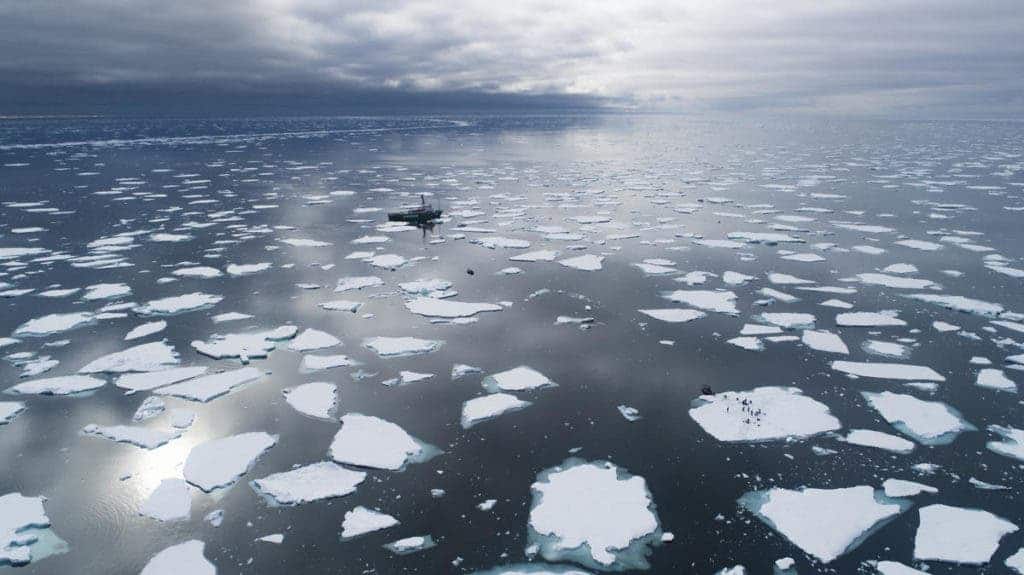The ocean is warmer, more acidic, and less productive, melting glaciers and ice sheets are causing sea level rise, and coastal extreme events are becoming more severe, according to a new landmark report from the United Nations’ Intergovernmental Panel on Climate Change (IPCC).

More than 100 scientists from 36 countries worked on the report — titled the Special Report on the Ocean and Cryosphere in a Changing Climate. It is the last of three special reports from the IPCC following last October’s urgent report that showed the world may only have until 2030 to keep global warming below 1.5 degrees.
“The open sea, the Arctic, the Antarctic, and the high mountains may seem far away to many people,” said Hoesung Lee, Chair of the IPCC. “But we depend on them and are influenced by them directly and indirectly in many ways – for weather and climate, for food and water, for energy, trade, transport, recreation, and tourism, for health and wellbeing, for culture and identity.”
The scientists said there may be some impacts to the global climate — like some amount of sea-level rise — that can no longer be stopped. But even though there is uncertainty in the report about what exactly the future holds, the authors are unambiguous on this: Despite the damage that has been done, humanity still has a choice.
“If we reduce emissions sharply, consequences for people and their livelihoods will still be challenging, but potentially more manageable for those who are most vulnerable,” Lee said. “We increase our ability to build resilience and there will be more benefits for sustainable development.”
Major changes
People in mountain regions are increasingly exposed to hazards and changes in water availability, the report said. Glaciers, snow, ice, and permafrost are declining and will continue to do so. This is projected to increase hazards for people, for example through landslides, avalanches, rockfalls, and floods.
Glaciers and ice sheets in polar and mountain regions are losing mass, contributing to an increasing rate of sea-level rise, together with the expansion of the warmer ocean. While sea level has risen globally by around 15 cm during the 20th century, it is currently rising more than twice as fast – 3.6 mm per year – and accelerating, the report showed.
Sea level rise will increase the frequency of extreme sea-level events. Indications are that with any degree of additional warming, events that occurred once per century in the past will occur every year by mid-century in many regions, increasing risks for many low-lying coastal cities and small islands.
Warming and changes in ocean chemistry are already disrupting species throughout the ocean food web, with impacts on marine ecosystems and people that depend on them, the report said.
To date, the ocean has taken up more than 90% of the excess heat in the climate system. By 2100, the ocean will take up 2 to 4 times more heat than between 1970 and the present if global warming is limited to 2°C and up to 5 to 7 times more at higher emission levels.
Urgent action
The growing emissions trend will likely lead to even more difficulties in the world’s oceans and glaciers in the near future, the IPCC warned. Global warming has already reached 1°C above the pre-industrial level.
Global-scale glacier mass loss and decline in snow cover are projected to continue in the near-term due to surface air temperature increases. The ocean is projected to transition to unprecedented conditions with increased temperatures, further acidification, and oxygen decline.
At the same time, the terrestrial and freshwater ecosystems of high-mountain regions like the Andes will continue to be altered, leading to species redistribution and loss of unique biodiversity. Fisheries will also be more challenged, with decreases in fish abundance and distribution.
Strongly reducing greenhouse gas emissions, protecting and restoring ecosystems, and carefully managing the use of natural resources would make it possible to preserve the ocean and cryosphere, the IPCC said, limiting risks to livelihoods and offer multiple additional societal benefits.
“The ambitious climate policies and emissions reductions required to deliver the Paris Agreement will also protect the ocean and cryosphere – and ultimately sustain all life on Earth,” said Debra Roberts, Co-Chair of IPCC Working Group II.






